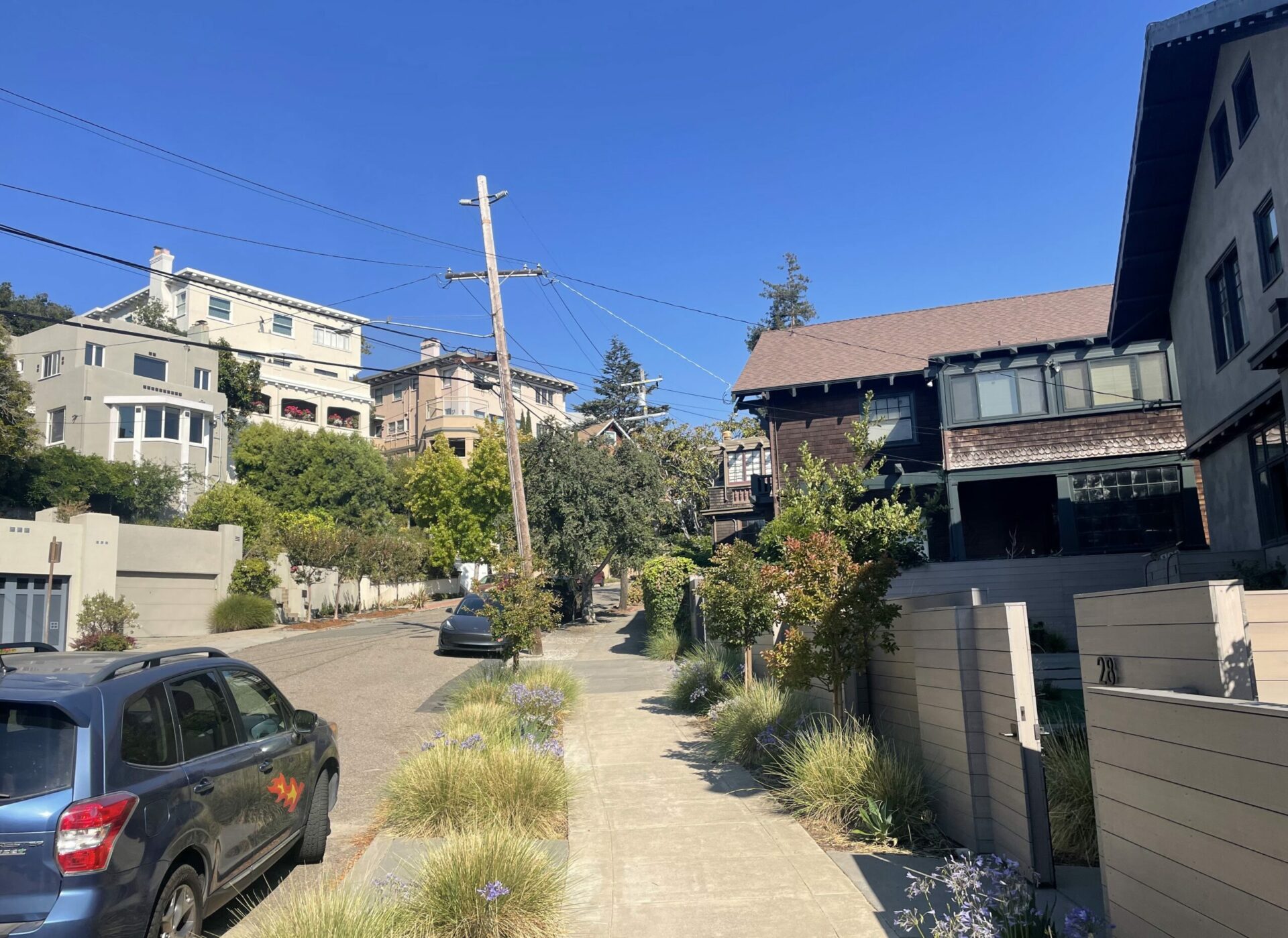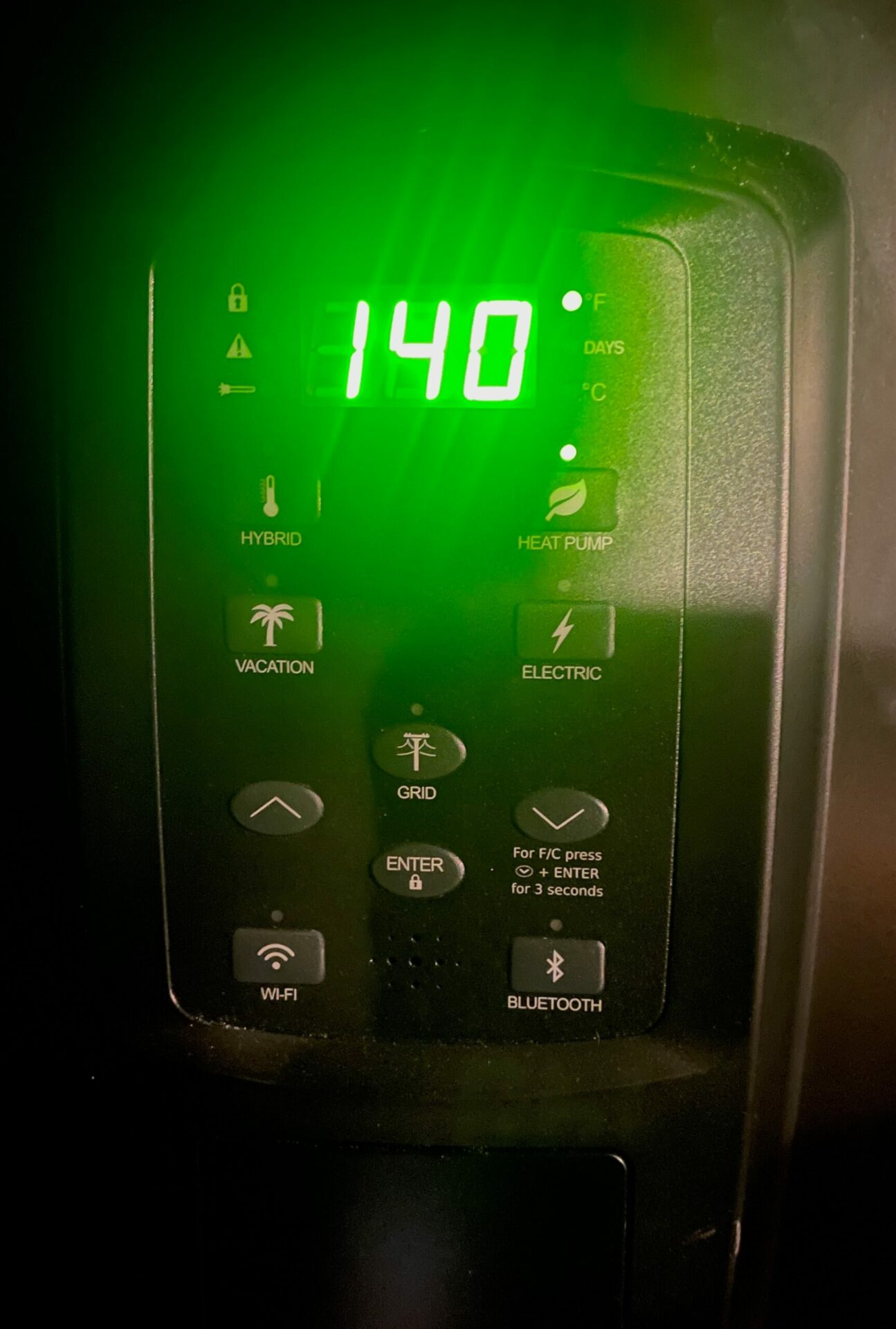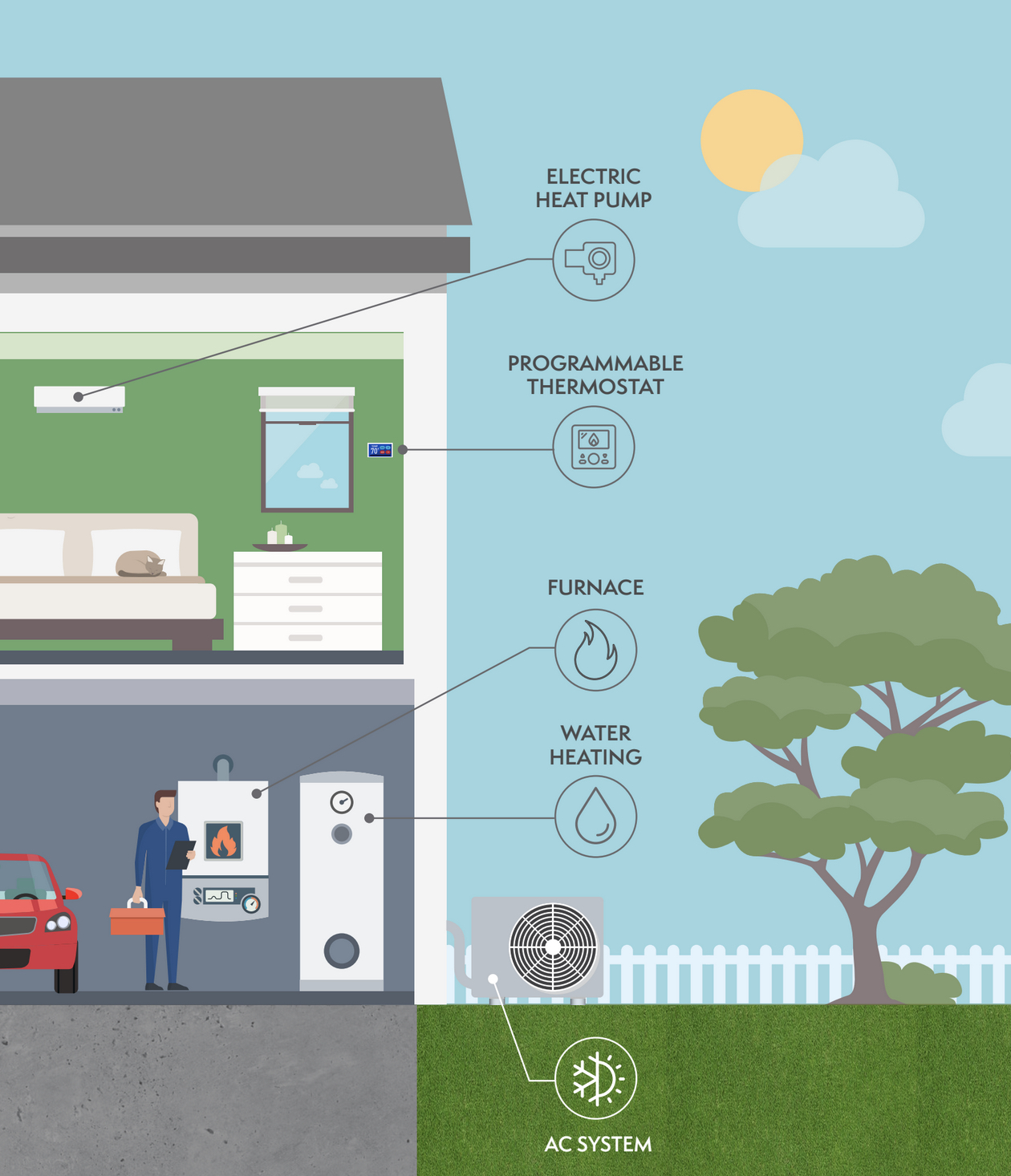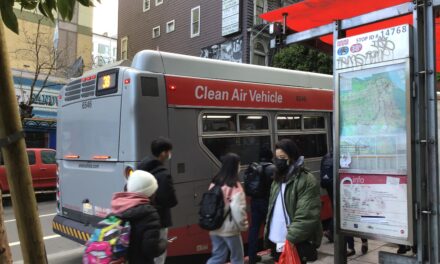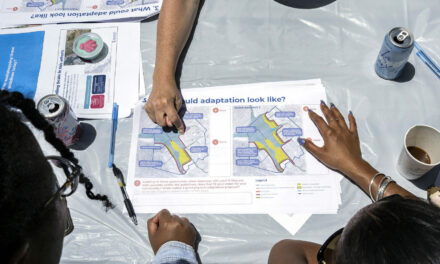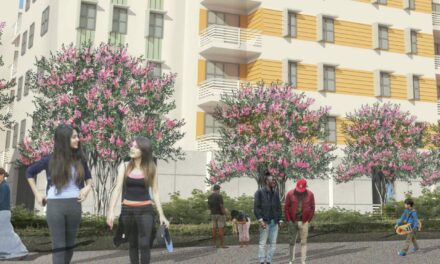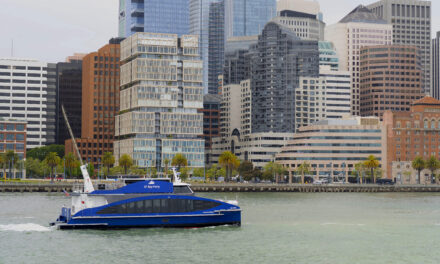Can BayREN’s Biggest Budget Ever Amp Up Energy Equity?
In July of this year, I visited a beautiful home nestled on a hill in the Claremont neighborhood of Berkeley. Built in 1915 by the prominent Bay Area architect John Hudson Thomas, the house exuded an air of dignified tranquility with its large bay windows and elegant wooden doors. Inside, however, half a dozen construction workers paced all over tarped floors, drilling holes in the walls and moving heavy objects. They were in the middle of electrifying the house, whose upgrades included a heat pump water heater and an electric heating system.
Both new appliances came with rebates from the Bay Area Regional Energy Network, or BayREN: $2000 to the homeowners for installing electric heat and a heat pump water heater, and $1000 to the contractor for installing the water heater as well. BayREN is a government group, comprising local agencies across the Bay Area’s nine counties. In the last decade, their programs have upgraded over 60,000 homes and prevented 156 million tons of carbon from warming the planet.
Despite having goals around equity, BayREN has historically struggled to reach disadvantaged communities. In June 2023, the state gave BayREN more taxpayer money than ever before to help disadvantaged communities become energy efficient. Whether BayREN can finally accomplish this goal remains to be seen.
Photo: Kofi Ansong.
Equity via Stacks of Rebates?
According to BayREN’s annual reports, the California Public Utilities Commission authorized BayREN 10 years ago precisely because it recognized investor-owned utility companies like PG&E were often limited in their capacity to provide energy efficiency programs to poor and middle-income communities. While the CPUC served the role of BayREN’s financier, PG&E was BayREN’s fiscal manager, overseeing its compliance and monitoring its budget. Over the years, even as PG&E has launched equity programs as well, the CPUC has continued to encourage BayREN to “target the hardest-to-reach customers.”
BayREN allocates most of its funds, over $35 million, to its Single Family program, which targets homeowners and renters of moderate annual income ($50,000-$160,000 for a family of three in San Francisco, for example). This program offers free energy advising from performance professionals, rebates for electric retrofits and no-cost efficiency kits. In 2022, the program upgraded 1175 moderate income homes, and they collectively saved an annual average of 240 kWh (The average home in California uses 605 kWh per month). The 1175 homes, however, represent only 30% of the total homes upgraded. According to BayREN Communications Coordinator Yeymi Reyes, the rebate programs “benefit [middle to upper-middle class] people the most.”
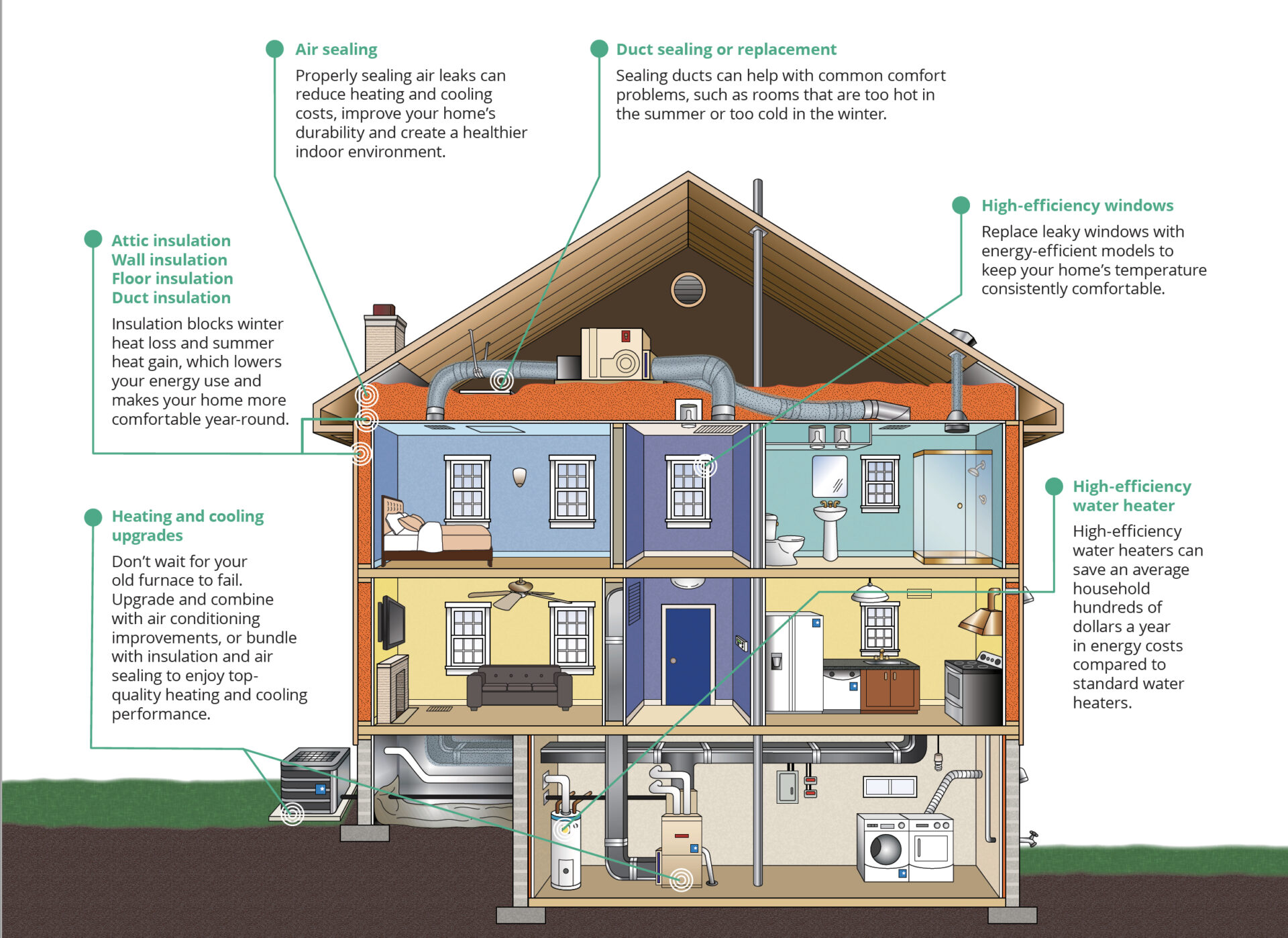
BayREN’s whole house approach to energy efficiency. Art: BayREN.
In part, the equity gap has to do with how rebates are structured: they can be small compared to overall project costs. Although the Berkeley homeowner I visited was receiving several thousand dollars in rebates from BayREN, the total cost of electrifying his home was around $50,000. To make use of rebates, homeowners often need to make significant out-of-pocket investments, which can put rebates out of reach for low-income homeowners.
Contractors can also face low profit margins for installing gas to electric retrofits. Despite the many men working on the Berkeley home, Larry Waters, the head contractor at the site, said the project would still take over a week. Waters also explained that the more efficient the upgrade, the more expensive it can be to implement. Less efficient upgrades often require cheaper material and smaller crews, and are faster to complete. “This work’s a little bit a labor of love,” he adds.
BayREN’s Bay Area Multifamily Enhancements program offers a similar suite of deals as the Single Family program — and has a similar equity gap. Ben Cooper, the project lead of BayREN’s multifamily division, confirmed at a climate convention this June that the program primarily worked with properties with “higher end market rate” rent prices. Equity and energy efficiency “can be complementary and sometimes they can be at odds,” Copper tells KneeDeep Times.
Biggest Budget Ever
On June 29, the California Public Utilities Commission approved BayREN’s budget request for 2024–2027, giving the network $171 million. The budget, which is funded by California ratepayers, is the largest investment the CPUC has made in BayREN to date (resulting in a more than 60% yearly increase in last year’s annual budget of $26 million, for example).
The budget request detailed six existing and four new initiatives that spanned commercial, residential and public market segments. BayREN defined four of its initiatives as equity programs, meaning their primary purpose is “providing energy efficiency to hard-to-reach or underserved customers.” Altogether 62% of the budget is allocated to equity programs: the annual average across the four years, $25 million, is roughly 50% more than the amount received last year. BayREN’s equity initiatives include expanding the single and multifamily programs, launching a new refrigerator replacement program and sponsoring a climate resilience nonprofit.
BayREN is taking steps to ensure their programs better target and benefit the hard-to-reach. Last year the Single Family program launched marketing campaigns targeting Chinese and Spanish speaking communities, for example. The campaigns included radio broadcasts of celebrity chef Martin Yan and local media personality GloryBella Orellano using induction cooktops, for which a household can receive up to $750 in rebates from BayREN. In total the marketing push resulted in approximately eight million impressions in various media.

Older, multi-family homes in urban neighborhoods like San Francisco’s Chinatown can be challenging to make more energy efficient. Photo: Wikimedia Commons.
BayREN is upgrading other programs as well. “Something that’s been exciting for us is that the multifamily property rebates program’s been revamped,” BayREN’s Reyes says. As of this January, multifamily properties located in communities with bad air pollution, or that are vulnerable to extreme heat, can receive an additional $500 in rebates per unit. Properties located in communities where rent is a significant percentage of renters’ expenses can receive up to double the base rebate.
A third program that will continue to receive funding with the new budget is Flexmarket, which helps small and medium-sized businesses who “often do not qualify for energy programs,” explains Reyes. For Flexmarket, BayREN partnered with Recurve, a technology company that can track the energy usage of the businesses a contractor sells appliances to via what they refer to as a “virtual power plant”. If, over a 12-month period, a contractor can reduce its virtual power plant’s energy costs below average, BayREN reimburses the contractor.
In an attempt to incentivize contractors to sell to the most underserved businesses, BayREN multiplies the contractor’s reimbursement by seven if it came from a hard-to-reach business (defined as a business in a disadvantaged community and where the facility is rented, there are fewer than 10 employees, or the primary language is not English).
Due in part to these steep incentives, Flexmarket stopped accepting applications three weeks after it launched last November, anticipating that the 21 companies it accepted would exhaust its $500,000 budget. Since Flexmarket’s 12-month assessment period has not closed, BayREN has yet to report whether the program effectively reduced energy usage. (In its 2022 annual report, BayREN did mention that at least one contractor included a hard-to-reach business in its virtual power plant, and that several of the contractors themselves were small and medium sized businesses.)
Home improvements for energy efficiency. Art: Sonoma County Home Resilience Guide.
Holding BayREN Accountable
In the meantime, a state watchdog group called Cal Advocates wants to make sure BayREN is effectively utilizing taxpayer’s money. To this end, Cal Advocates asked the CPUC to set an explicit goal to assess how well BayREN targets underserved communities, pitching that BayREN should at least provide equal savings between marginalized groups and everyone else. Though the CPUC deemed this suggestion premature, citing that some programs have yet to launch, it is now requiring BayREN to produce quarterly reports on metrics like the number of underserved participants in its programs and their expected savings.
In its budget approval letter, the CPUC stated that these metrics “will provide a strong starting point from which to assess progress and impacts of the equity” programs in BayREN’s portfolio.
Meanwhile, the CPUC also tasked PG&E with developing more robust equity goals for BayREN. The commission asked the company to have the goals ready in time for BayREN’s next budget request, scheduled for 2028.






